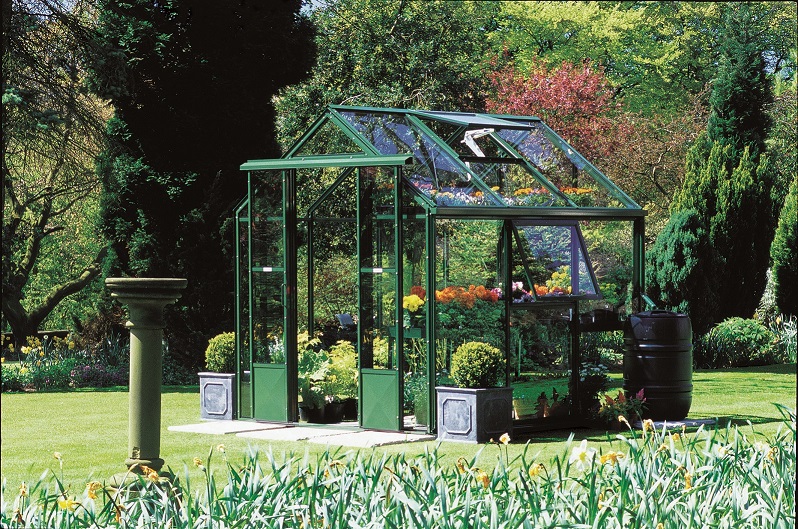
Small greenhouses – those under, say, 50 ft2 (4.65 m2) – often have great appeal because finding space for them is less of an issue. But still, even a small greenhouse can be a significant financial investment, and most gardeners want to get good value for their money. To help maximize that value, there are several features to look for when buying a small greenhouse. Here are some of the primary ones.
The most important thing to consider is the structure of the greenhouse, whether it’s solidly built. Some small greenhouses have lightweight plastic framing, which makes it easy for a strong wind to blow the greenhouse over if it isn’t firmly anchored. In addition, very lightweight framing won’t support much weight on interior shelves, so heavy pots must be put on tables instead. Very lightweight aluminum framing has these and other drawbacks. In a strong breeze, it can warp or bend, opening cracks between the glazing and the extrusion that allows warm air to leak out. Even worse, the clips holding the glazing can bend out of alignment or spring loose, causing the glazing to pop out. So if you’re leaning toward getting an aluminum-framed greenhouse, heavy-duty aluminum is the only way to go. But bear in mind that heat can pass right through aluminum framing and be lost to the outdoors.
The door of a greenhouse is another important consideration. Make sure it closes properly and seals the greenhouse against leakage of air. If you plan to heat your greenhouse, any loss of warm air can cost you significantly in fuel dollars. Because of possible air leakage, I’m not a big fan of sliding doors on greenhouses. I’ve seen some sliding doors that leave a wide enough gap around them to allow mice to squeeze through. In addition, dirt in the slider track often makes it harder to close the door properly. My thinking is that a hinged door offers a tighter seal and is easier to lock.
When selecting a greenhouse, you also want to make sure that opening windows function properly. Quite often, they will bind because they’re not installed perfectly square in their frames. Such binding is particularly problematic if you plan to have automatic window openers. This automation is especially useful in a small greenhouse, which tends to heat up and cool down quickly, therefore making it even more critical for windows to be opened or closed promptly.

Finally, we come to glazing, another key consideration when buying a greenhouse. There are different types of glazing. The cheapest option is plastic sheeting, which also has the advantage of being easily replaced. I use plastic sheeting as my second line of wintertime defense. Because temperatures here in New England can drop into the single digits Fahrenheit, I install plastic sheeting over the glass glazing on my greenhouses and in this way reduce my heating costs by 15% to 20%. But plastic sheeting alone is a very inefficient and short-lived form of glazing. A more often used option for a small greenhouse is polycarbonate glazing. It’s fairly light in weight, resistant to breakage, and allows about 85% of light to pass through depending on its color and thickness, which ranges from 1/8” (2mm) up to about 3/4” (18 mm). The main problem with polycarbonate is that it expands and contracts much more than glass does, so this needs to be taken into account when the greenhouse is assembled. For this and other reasons, glass is the most preferred form of greenhouse glazing. It allows about 95% to 98% of light to pass through, and it comes in a large variety of options. In general, small greenhouses with glass glazing have standard, single panes of glass. A possible upgrade for overhead glass is tempered glass, which shatters into small, relatively harmless pieces as opposed to the large, jagged pieces into which regular glass shatters. Tempered glass can therefore be a valuable safety feature in a greenhouse, although it does make the greenhouse more expensive.


